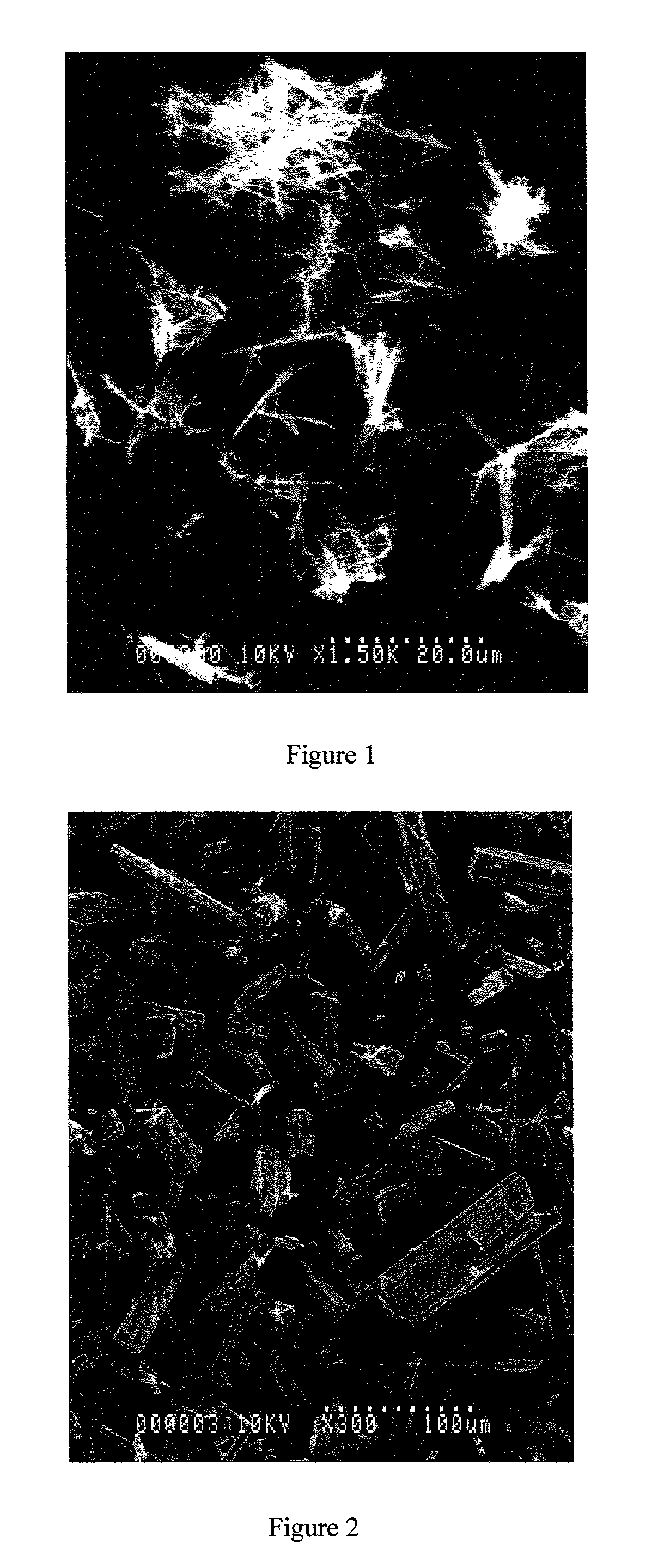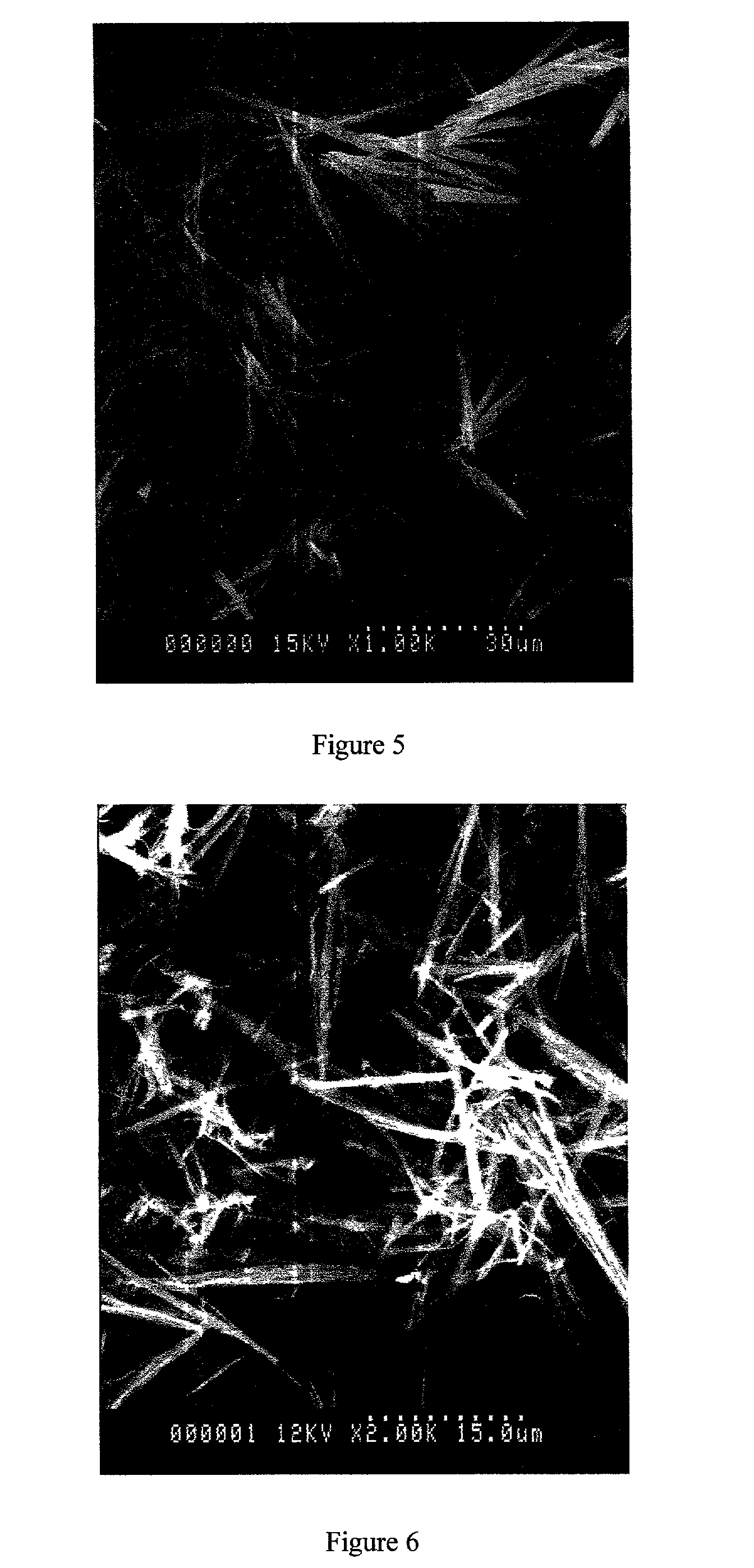Particle formation methods and their products
a particle and particle technology, applied in the direction of drug compositions, pharmaceutical product form changes, separation processes, etc., can solve the problems of increasing the risk of product loss and contamination, and coating of microfine particles, for instance in the range 0.5-100 .mu.m, and proving particularly problemati
- Summary
- Abstract
- Description
- Claims
- Application Information
AI Technical Summary
Problems solved by technology
Method used
Image
Examples
experimental examples
[0125] Experimental Examples A
[0126] These examples demonstrate the coformulation, using SEDS.TM., of the highly polar anti-malarial drug quinine sulphate (QS) (Sigma.TM., UK) with the apolar polymer ethyl cellulose (EC-N7, Hercules.TM., UK). QS has an unpleasant bitter taste and would conventionally need to be coated with a taste masking agent prior to administration.
[0127] A SEDS.TM. process was used to precipitate both drug and polymer together from a single "target solution". The apparatus used was analogous to that described in WO-95 / 01221 (FIG. 1), using a 50 ml Keystone.TM. pressure vessel as the particle formation vessel and a two-passage concentric nozzle of the form depicted in FIG. 3 of WO-95 / 01221. The nozzle outlet had an internal diameter of 0.2 mm. Supercritical carbon dioxide was the chosen anti-solvent. The particle formation vessel was maintained at 100 bar and 35.degree. C.
example a1
[0128] Example A1--Precipitation of QS Alone
[0129] A 1% w / v solution of QS in absolute ethanol was introduced into the particle formation vessel at 0.3 ml / min through the inner nozzle passage. Supercritical carbon dioxide was introduced at 9 ml / min through the outer nozzle passage. Particles formed and were collected in the vessel.
[0130] The product was a fine, fluffy white powder. SEM (scanning electron microscope) examination showed a needle-like morphology (FIG. 1), different to that of the starting material (FIG. 2).
[0131] Example A2--Coprecipitation of QS and Ethyl Cellulose
[0132] A 1% w / v solution of QS in absolute ethanol, also containing 20% by weight (based on the overall drug / polymer mix) of ethyl cellulose, was introduced into the particle formation vessel with supercritical carbon dioxide, using the same operating temperature and pressure, and the same fluid flow rates, as for Example A1.
[0133] The product, collected in the vessel, was again a fine, fluffy white powder, ...
example a2
[0135] repeated but using 5%, 10%, 30%, 40%, 50%, 60%, 70% and 80% w / w respectively of the ethyl cellulose polymer.
[0136] All products were fine, fluffy white powders. Those of Examples A3-A7 (respectively 5%, 10%, 30%, 40% and 50% w / w ethyl cellulose) had a needle-like particle morphology with smooth surfaces--see the representative SEM photographs in FIGS. 4, 5 and 6 for the products of Examples A3, A4 and A6 respectively.
[0137] The Example A8 product (60% w / w ethyl cellulose) contained spherical particles, most likely of ethyl cellulose, deposited on the edges of needle-like particles (see FIG. 7). This effect became more marked as the ethyl cellulose content increased, the spherical polymer particles covering almost all the QS crystal surfaces in the products of Examples A9 (70% w / w ethyl cellulose, FIG. 8) and A10 (80% w / w ethyl cellulose, FIG. 9).
[0138] Results and Discussion
[0139] The X-ray diffraction (XRD) patterns for the products of Examples A2 to A10 were essentially sim...
PUM
| Property | Measurement | Unit |
|---|---|---|
| pressure | aaaaa | aaaaa |
| pressure | aaaaa | aaaaa |
| temperature | aaaaa | aaaaa |
Abstract
Description
Claims
Application Information
 Login to View More
Login to View More - R&D
- Intellectual Property
- Life Sciences
- Materials
- Tech Scout
- Unparalleled Data Quality
- Higher Quality Content
- 60% Fewer Hallucinations
Browse by: Latest US Patents, China's latest patents, Technical Efficacy Thesaurus, Application Domain, Technology Topic, Popular Technical Reports.
© 2025 PatSnap. All rights reserved.Legal|Privacy policy|Modern Slavery Act Transparency Statement|Sitemap|About US| Contact US: help@patsnap.com



